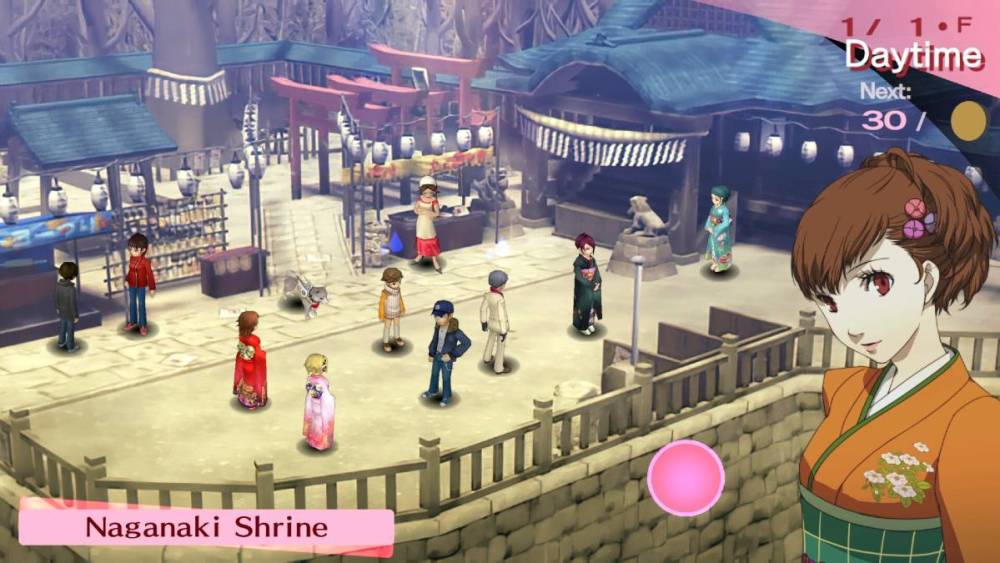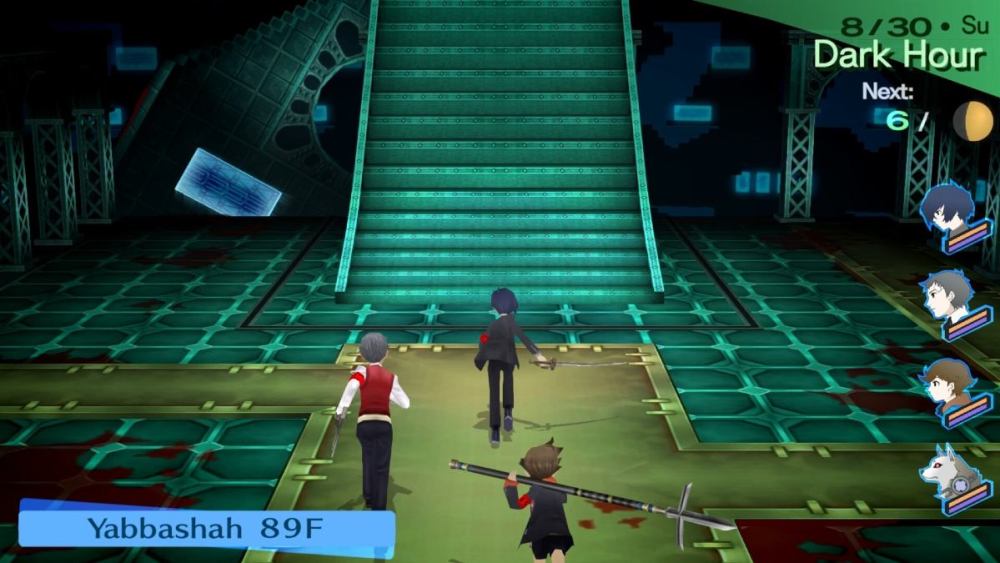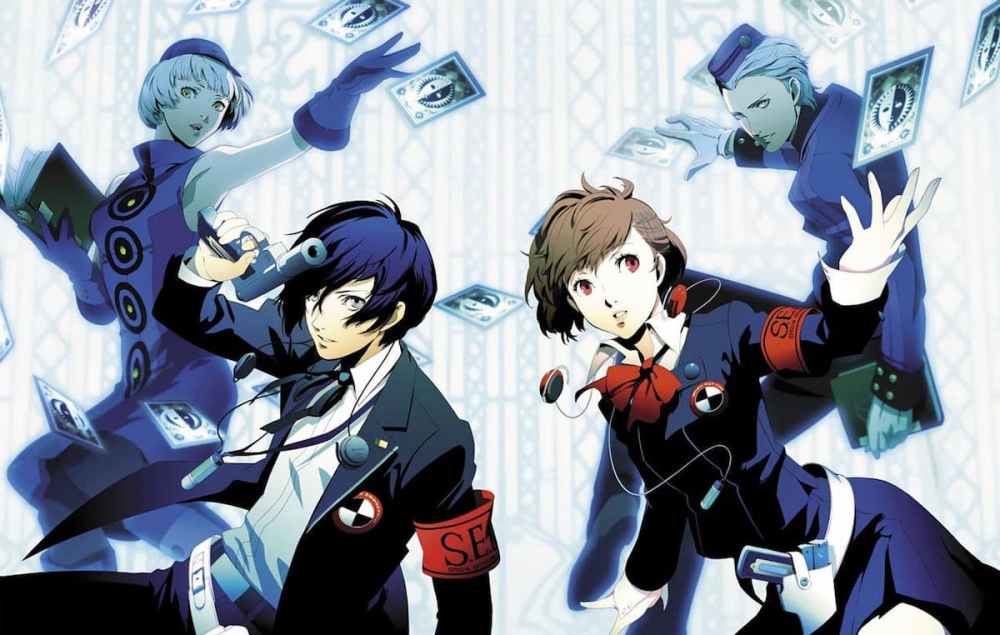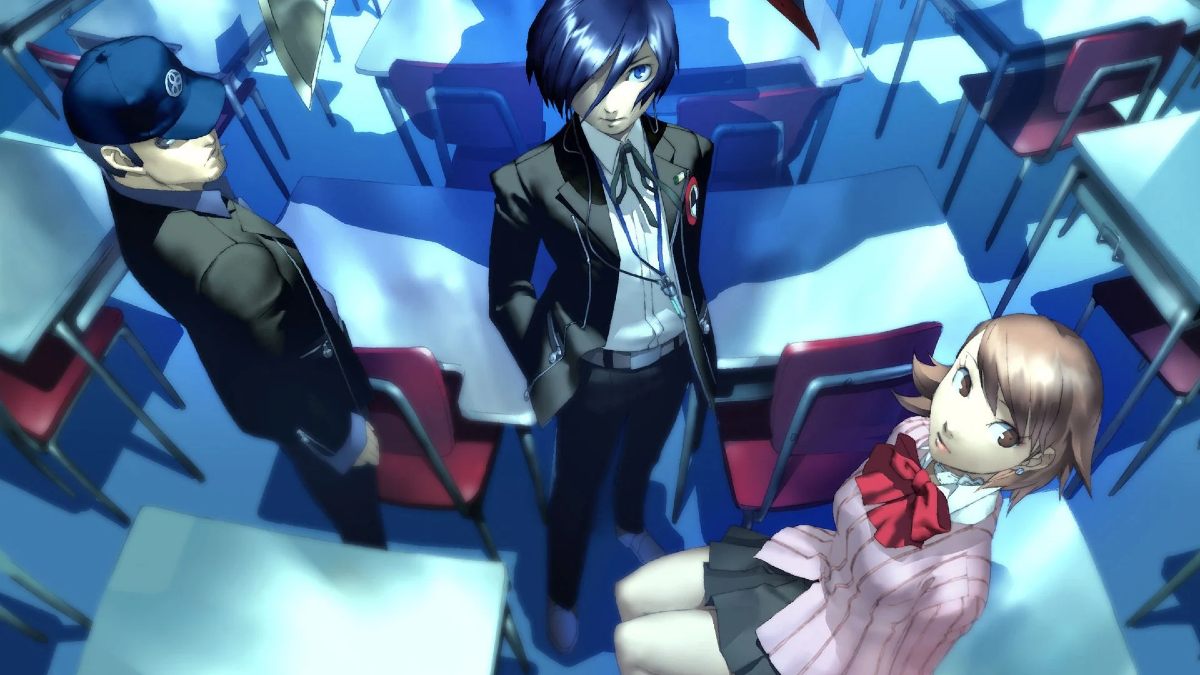Persona 3 Portable on Switch
I wasn’t really sure what to expect when going into Persona 3 Portable. While I’d heard great things about the title, time can play a factor in a lot of games, especially remasters. Yet, even though it’s a 2023 port of a 2009 re-release of a 2006 PS2 game (it’s okay if you need to sit down after reading that), Persona 3 Portable might just be the reason I fall in love with the franchise.
For that statement to make sense, it’s important to have a bit of context with my Persona history. Despite loving RPGs/JRPGs, I only recently had my first experience diving into the series when Persona 5 Royal came to Game Pass in October 2022, as everyone raved to me that it’s a must-play.
While I enjoyed what I’ve played so far, I’ve only made it through about half of the game and am struggling to get much further. The hardest part is that the opening act of Persona 5 is a slog, with the story moving at a snail’s pace for the first couple of dungeons, as it still teaches you the boatload of different mechanics that make up the game.
On top of getting to know the characters, story, and mechanics, especially as a first-time player, the tutorial is a mind-numbing 13 hours. When I booted up Persona 3 Portable, I was pleasantly surprised to see that the game teaches you just about everything you need to know in the first couple hours of playing.
Like in the rest of the series, Persona 3 Portable is a nice mix of a JRPG and a visual novel. One section of the game focuses on fighting monsters, called Shadows, and exploring dungeons, while the other is all about building relationships and going to school.
When it comes to the combat side of things, I found the gameplay loop of Persona 3 pretty enjoyable, even if it tends to get a bit repetitive after a bit. Every night, you and your friends have the ability to go into a place called Tartarus, a spooky tower filled with Shadows that affect the mental state of people in the outside world, and it’s up to you to stop them.
As a group, you explore your way up the tower, using superpowers known as Personas, also referred to as masks. These powers are physical manifestations of hardships that an individual has faced, each of which have specific abilities that are strong and weak against certain shadows and vice versa. Basically, they’re just like Pokemon.
The unique thing about your character is that they’re able to capture and switch through different Personas mid-battle. Everyone else is only able to use one of these masks, making them a bit less well-rounded and special.
Due to this, I definitely felt overpowered at first. Yes, I was limited to only being able to switch Personas one time per turn, but it wasn’t too difficult to dispatch enemies after learning their type weakness after the first few hours of gameplay, simply because my character alone could pick up and use every type.
Where it gets interesting is when enemies not only scaled up on higher floors but when you face bosses that can throw in monkey wrenches into combat, like switch their status type mid-battle. This is where you need to plan your moves, item usage, and buffs or debuffs in your group accordingly.

This is also where the other gameplay aspect outside of dungeons plays a huge role. Alongside building relationships for the sake of romance and bromance, increasing Social Links with both teammates and companions increases your stats in-game, which makes them vital to grinding out harder sections of the tower.
More than anything, though, building Social Links in Persona 3 Portable was my personal favorite part, as it resulted in some great world and character-building. Whether it’s getting to know the eccentric teachers that quiz you throughout Gekkoukan High School or helping Kenji Tomochika navigate a complex relationship with his teacher, the setting and plot are just a joy.
This part of Persona 3 Golden also offers a lot of replay value, as you can explore different activities and relationships throughout multiple playthroughs to experience multiple stories. It’s also the only title I’ve played in the series so far that lets you choose a female character, resulting in completely different dynamics with characters that were otherwise just your friend or a love interest when playing as a male.
Alongside being fun and enjoyable, Persona 3 Portable also tackles a lot of difficult and nuanced subjects, featuring a lot of character growth. The subject of death and sadness is particularly prominent in the game, as even Koro the dog gets a touching story about dealing with the death of his owner.
Persona 3 Portable just does an excellent job of striking a balance between being serious and funny, which is by no means easy. Due to that, I really became attached to the characters, even lovable idiots like the class clown, Junpei Iori.
Arguably one of the weirdest parts of the story comes from how Persona users summon their powers. You see, instead of using tarot cards or summoning Persona’s after a traumatic experience, characters… shoot themselves in the head. No, I’m not joking.
At first, it’s a bit jarring to see a bunch of teenagers shooting themselves with guns, known as evokers, but since it isn’t something that appears to be hurting them, the mechanic surprisingly becomes commonplace. That said, something that I couldn’t really get used to was how repetitive Tartarus gets.

While it’s understandable that Tartarus, and the characters in general, isn’t very good-looking, as this was a portable port of a PS2 title, that doesn’t mean the area needs to be as barren and lifeless as it is. Regardless of what floor you’re on, the only things that make them up are monsters and treasure, each hidden throughout a randomly generated room with no personality or story behind it.
The UI might also come off as a bit aged for some, but I personally didn’t mind it too much. In fact, I was actually glad that instead of walking around, you just have a cursor that takes you around different locations and interactable characters and objects throughout the setting, as it made for a much more streamlined process.
When all is said and done, I really think the story, characters, and overall loop of Persona 3 Portable are vital for anyone that is on the fence about the series. And despite showing its age a bit in sections, the combat is still rewarding and satisfying, solidifying the game’s place as one of the premier RPG titles in all of gaming. I genuinely believe it’s also going to be the reason I get back into Persona 5 and can truly come to appreciate what everyone else loves about the game so much.

Reviewer: Andrew McMahon | Award: Editor’s Choice | Copy provided by Publisher.
Pros
- Wide variety of interesting stories and characters to interact with.
- Social links tying back in to gameplay.
- Boss fights changing things up and being more challenging.
- Replayability that allows you to experience different stories and romances.
Cons
- Tartarus & UI really show their age.
- Gameplay can be pretty generic at times.
Release Date
Jan 18, 2023
Developer
Atlus
Publisher
SEGA
Consoles
Nintendo Switch, PS4, PlayStation Portable, Xbox One, Xbox Series X|S, & PC



